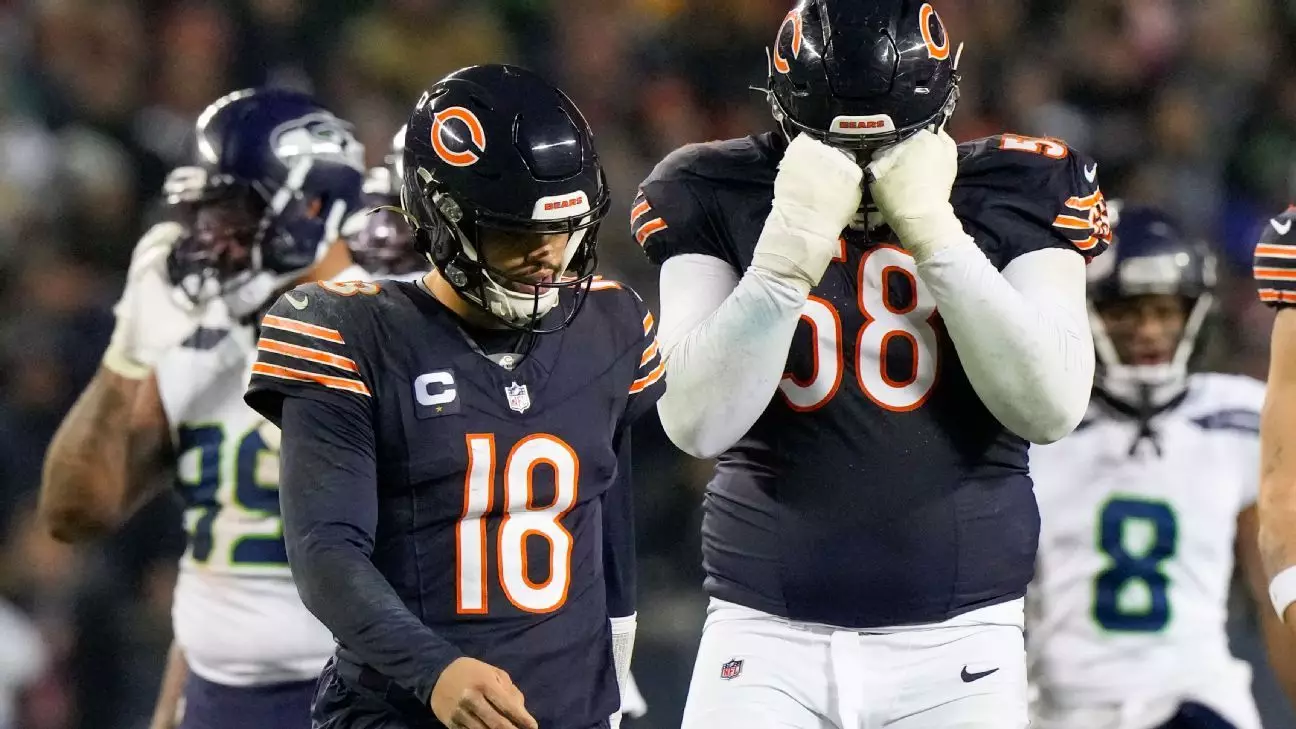The Chicago Bears have been mired in controversy and mismanagement in recent weeks, culminating in their latest defeat against the Seattle Seahawks. This loss not only marks the Bears’ tenth consecutive setback but also highlights a troubling trend of poor coordination and decision-making that continues to plague the franchise. A month after the dismissal of head coach Matt Eberflus stemming from similar issues during a Thanksgiving game against the Detroit Lions, this recent defeat reinforces the urgent need for strategic overhaul within the organization.
In a season already riddled with challenges, the Bears’ inability to effectively manage the game clock and utilize timeouts became painfully evident in their matchup with Seattle. As the game reached its climax, Chicago found itself trailing by three points, echoing their earlier missteps against Detroit. With a little over five minutes remaining, the Bears took possession deep in their own territory but faced a crucial decision-making juncture.
Displaying a lack of cohesion and clarity, the Bears resigned themselves to making questionable strategic choices. Interim head coach Thomas Brown, stepping in after Eberflus’s firing, attempted to pivot tactically. His decision to call a timeout before a punting scenario illustrated either a misguided attempt to be more aggressive or a profound lack of communication within the team’s ranks.
Even with time dwindling and a clear need to score, the Bears’ offensive unit struggled to mount a coherent attack. Quarterback Caleb Williams, despite showing flashes of promise, was unable to lead the team effectively down the field. After successfully converting a crucial fourth-and-5 pass to DJ Moore, the offense found itself mired once again—unable to capitalize on the momentum gained.
In a critical moment, Williams faced pressure from the Seahawks’ defense, resulting in a hit that left him momentarily disoriented. The 38 seconds that ticked off the clock during this timeframe highlighted the fracture between the player on the field and the coaches on the sidelines. Williams’s frustrated remarks post-game suggested a disconnect, revealing that he felt unsupported during the chaotic sequence of plays leading to the Bears’ last offensive efforts.
Postgame reflections revealed a pervasive sense of confusion among the players, further emphasizing the chaotic atmosphere that characterized the Bears’ sideline. The team squandered two timeouts in rapid succession—choices that compounded their inability to advance strategically toward field goal range. As the final minutes evaporated, it became evident that the Bears may have traded an opportunity for a well-executed field goal attempt for a series of disjointed pass plays, culminating in a frustrating interception.
Failure to act decisively in critical moments illustrates an overarching theme of disorganization within the Bears’ framework. Players like DJ Moore expressed bewilderment at the frantic nature of their final drive, suggesting that there were inconsistencies in how decisions were made and communicated. Ultimately, these breakdowns reaffirmed a growing sentiment that the instability plaguing the Bears could set back their development for years to come.
As the Bears reflect on their challenges, it is imperative that the franchise reevaluates its priorities and strategies moving forward. This current season, filled with disappointing results and missed opportunities, should serve as a wake-up call for leadership within the organization. The need for a coherent vision that prioritizes team cohesion, effective communication, and game management cannot be overstated.
The Bears need to systematically address these deficits by instilling a culture of accountability and clear expectations within the team. Fostering an environment where players and coaches can operate with a unified purpose is crucial to reversing the tide of losses and building toward a competitive future. An honest dialogue about past decisions, current practices, and future directions will be essential for the organization to navigate the challenges ahead.
In the end, the Bears’ struggles may not be solely a reflection of their talent on the field but rather an indication of deep-seated issues in organizational structure and communication. With determination and a commitment to improvement, Chicago can emerge from this chaotic chapter and chart a course toward a more promising season ahead.


Leave a Reply